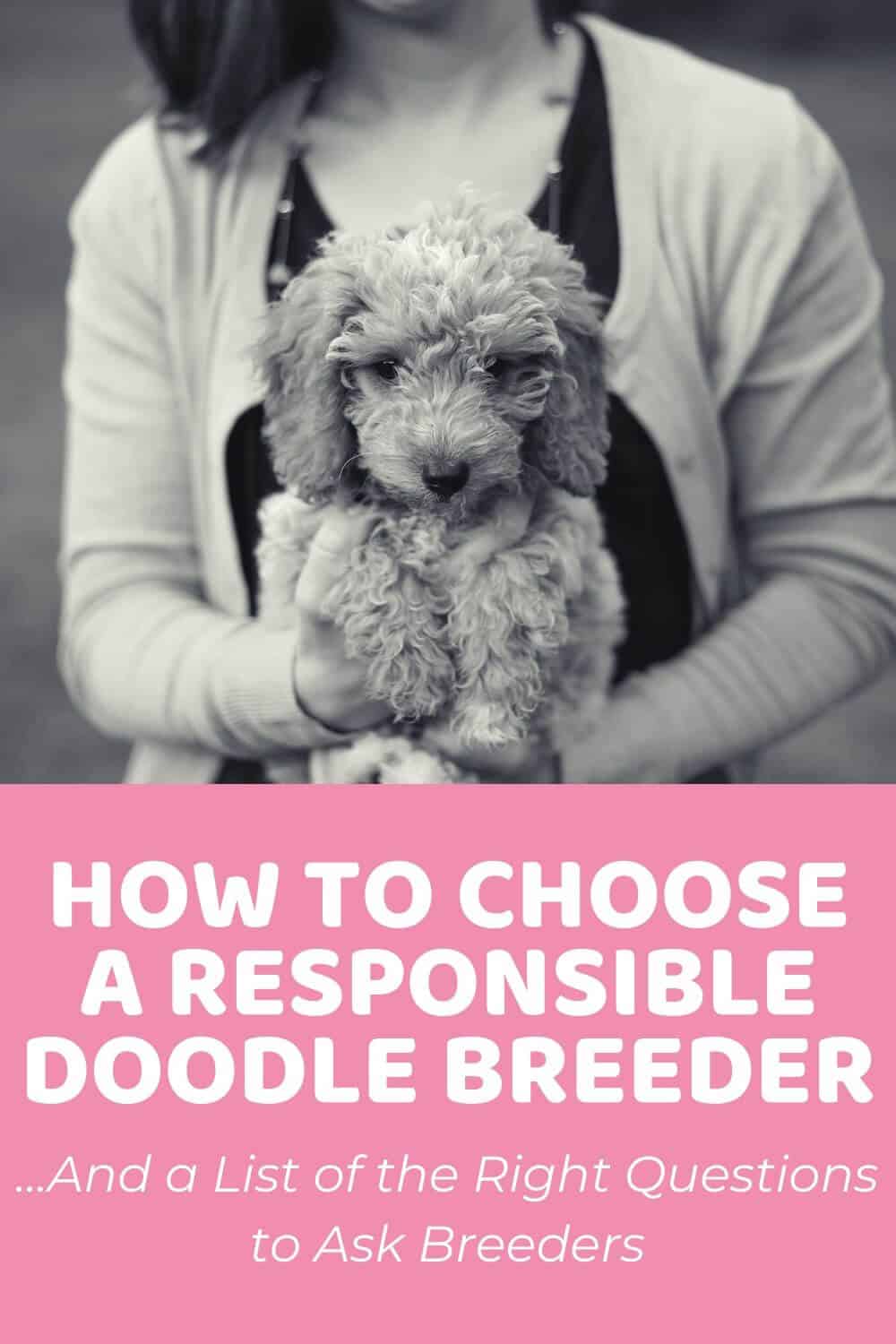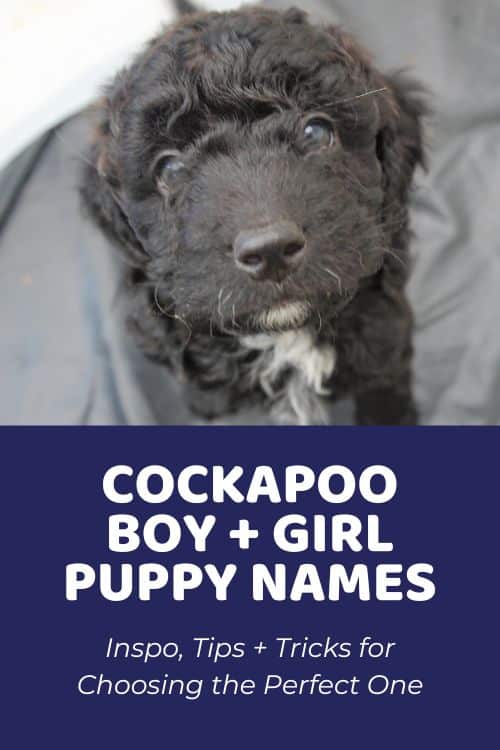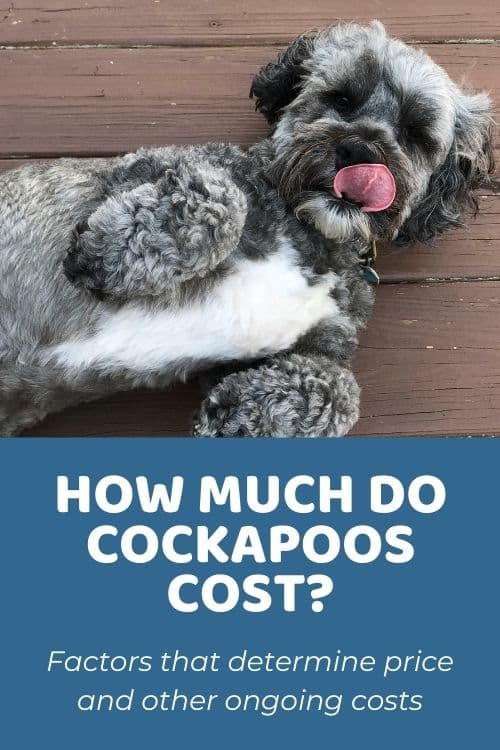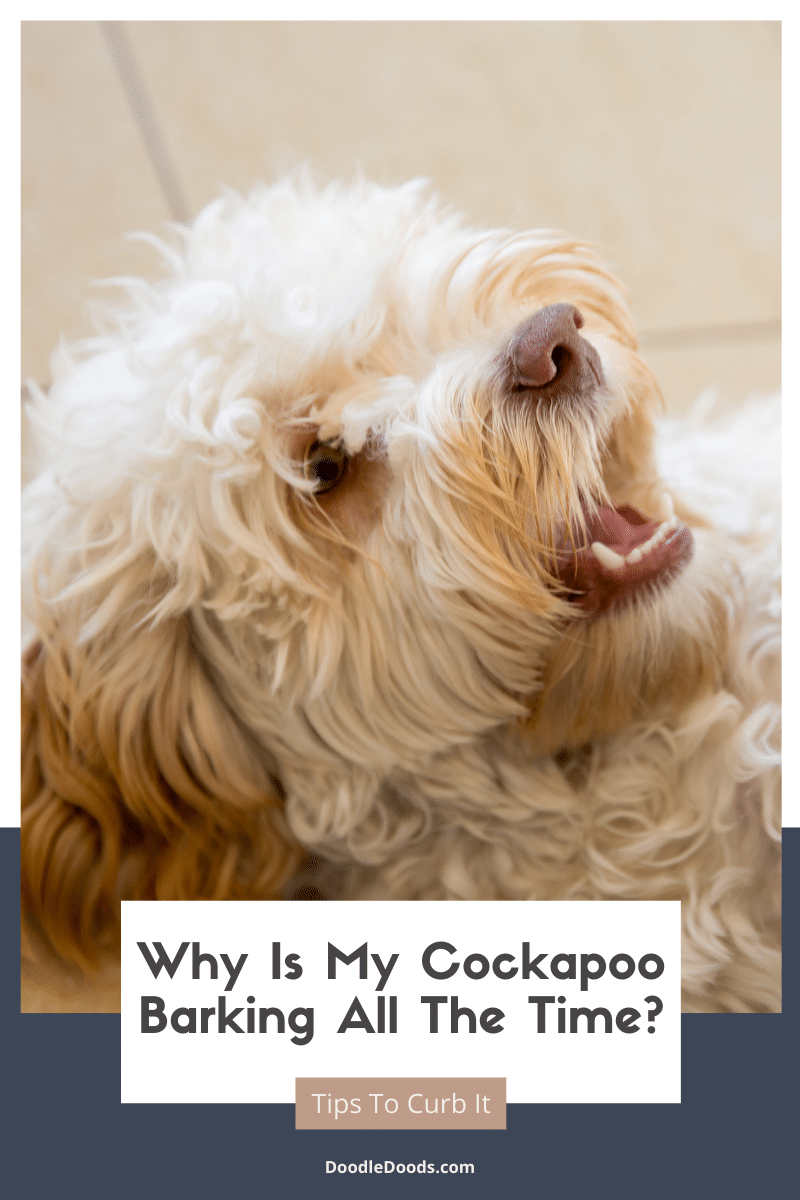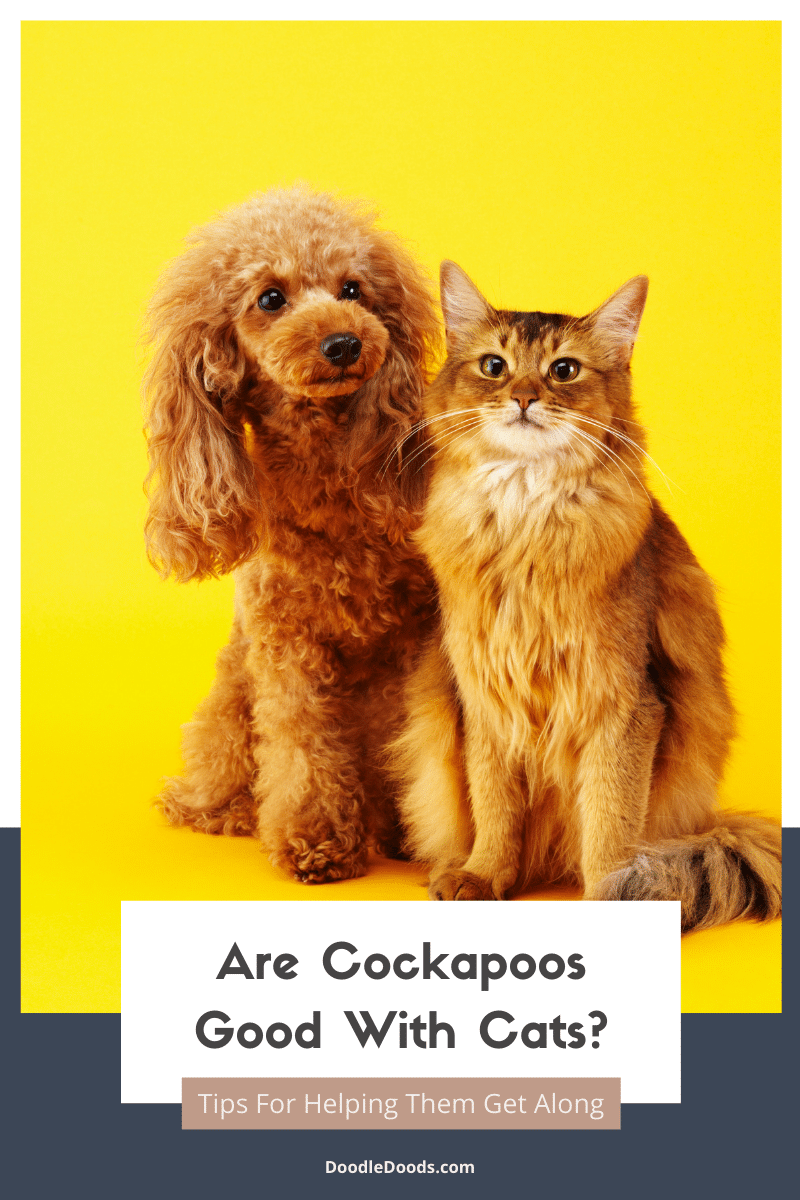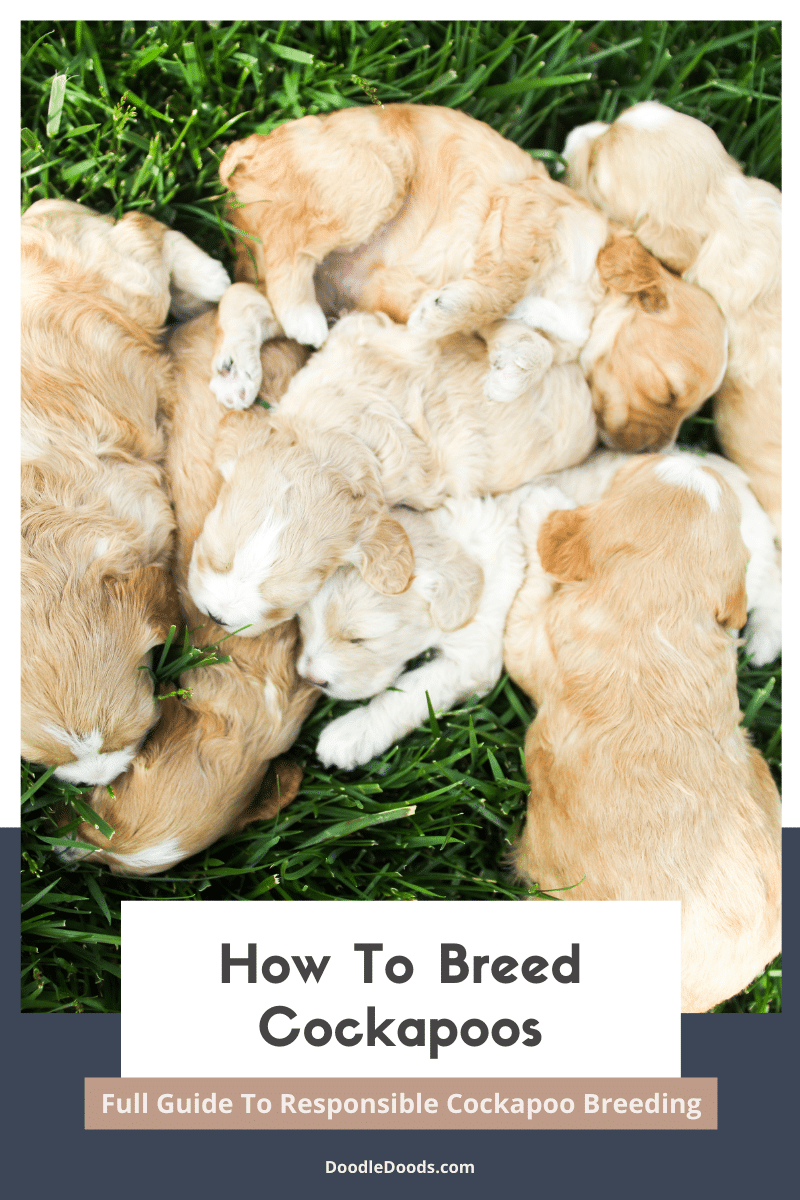If you’re looking for a cute small-to-medium-sized Doodle with plenty of personality, you can’t go far wrong with a Cockapoo. These delightful dogs are intelligent and loving and will keep your laughing with their adorable clown-like antics. However, there are many types of Cockapoos – there isn’t just one specific kind. Not only do these playful pups come in a variety of sizes (Maxi, Miniature, Toy, and Teacup) and colors and patterns, but there are different generations of Cockapoo, too.
Have absolutely no idea what we’re talking about? Keep reading to find out more about the different types of Cockapoo you can choose from!
Table of Contents
- Cockapoos: The Original Doodles
- Deciphering The Breeder’s Code
- Key Differences Between The Cockapoo Generations
- Which Cockapoo Suits You?
- Finding A Good Cockapoo Breeder
- Frequently Asked Questions About Types of Cockapoos
- Final Thoughts
Cockapoos: The Original Doodles
A gorgeous yet wacky combination of the super popular (yet sadly pretty high shedding) Cocker Spaniel and the highly intelligent, ‘hypoallergenic’ Poodle, Cockapoos have been around since at least the 1950s. Well received right from the start, with their sweet, affectionate, super-family-friendly temperament, these dogs effortlessly acquire fans everywhere they go.
One of the biggest benefits of these dogs having been around for a while (and being much in demand, too) is that great strides have been taken toward establishing breed standards for these dogs. This is something you don’t often find outside of pedigree pups. What this means is that there is now a fair amount of consistency in what Cockapoos look like and are like. They are not quite the surprise newer Doods variations can be.
That being said, the way in which these dogs differ from most other organized breeds is that there are still different types of Cockapoos. In this way, they aren’t just categorized by coat color and pattern but also by size and generation too. You’ll likely already be aware of the different size options and will know which one you are after based on your specific requirements (if not, read this). However, the whole generation thing might feel like much more of a mystery.
Let us break it down a bit for you.
Deciphering The Breeder’s Code
When breeding Doodles, the genetics of the litter is obviously dependent on those of the parent pups. As Cockapoos were first created by pairing the Cocker Spaniel with the Poodle, things were initially pretty simple. The puppies would inherit a 50/50 split of the genes. However, as genetics can be tricky, with this ratio, breeders couldn’t be sure exactly which qualities would be passed along from each parent pup.
The issue with this is that, while all Cockapoos are undeniably lovely, the reason they were bred in the first place was to allow people with allergies to benefit from all the wonderful qualities that have consistently made Cocker Spaniels one of the most popular dogs in the country. However, Cockapoos resulting from a 50/50 pairing can end up with three possible coat types: straight, curly, or wavy. As the straight coat comes from the shedding Cocker Spaniel side, this means that not all Cockapoos are ‘hypoallergenic.’
To be more sure of curly Poodle hair, breeders devised a system whereby they would backcross a Cockapoo with a purebred Poodle to up the amount of Poodle genes in the mix. This made it more likely (but not guaranteed) that the puppies would have the desired coat. From there, in the name of perfecting Cockapoo health, temperament, appearance, and size, breeders have combined other pairings in a system that has become increasingly complicated to the point that it now takes a bit of explaining:
F Type – What It Is And Why It’s Important
Firstly let’s talk about generations. So, the first type of Cockapoo was the straight Cocker Spaniel – Poodle mix. The is a first-generation Cockapoo. Breeders refer to these dogs as “F1,” whereby the ‘F’ stands for filial hybrid. Filial comes from the Latin meaning of a son or daughter, and the hybrid part simply means that the dog has two different breed parents. These dogs, as discussed above, have a 50/50 gene split.
Then you have the “F2” or “second-generation” Cockapoo, whose parents are both first-generation Cockapoos. These dogs have a 50/50 gene split. So, what’s the point? I hear you cry. Second-generation dogs typically allow for a greater range of sizes and coat colors/patterns. So, for instance, if you don’t have a breed that could easily be (ahem) combined with a smaller Poodle, the second-generation doodle is the solution. Beyond this, these dogs will usually be undoubtedly ‘Doodle-like’ in appearance.
Finally, you have the “F3”, “third-generation,” or “multigen” Cockapoos. These dogs might have two F2 Cockapoo parents or some other combination of Cockapoos (you’ll see the full range shortly). This allows for more standardization with the puppies. The breeder can fine-tune the particular qualities they want from each of the parent breeds and can be a little surer about the temperament and appearance (size and color) of these dogs – especially if they have bred litters from these parents before.
And B?
The problem with the various generations, as you might have worked out, is that you’re always going to have the 50/50 gene split that causes havoc in predicting coat type. Here we bring in the backcrossing… This is where the breeder adds another Poodle into the mix… well, usually. In some cases, they might choose to rebreed with the other parent pup (the Cocker Spaniel)- but this is very rare indeed as most buyers are after the Poodle coat. Anyhow, what you have now is the Cockapoo generation with the backcross incorporated, and so things get a teensy bit more complicated.
Let’s start with the “F1B” or “first-generation backcross” Cockapoos. Instead of having one parent of each breed, these dogs have one F1 Cockapoo parent and one Poodle parent. So now you have puppies with 25% of their genes from the Cocker Spaniel side and 75% from the Poodle side. Inevitably you will see more Poodle traits in these pups, including, hopefully, that excellent allergy-friendly coat.
Some breeders go further again by backcrossing the offspring of THIS pairing with another Poodle. With one F1B Cockapoo parent and one Poodle one, these are referred to as “F1BB” or “first-generation backcross, backcross” Doodles. These puppies have a whopping 87.5% Poodle genes and a mere 12.5% from the Cocker Spaniel. At this point, these dogs obviously resemble Poodles more than ever. Indeed these are the Doods with the most Poodle genes of all. But we haven’t quite finished yet…
Because then you have “F2B or “second-generation backcross” – Cockapoos with an F1 Cockapoo parent and an F1B Cockapoo parent. These dogs are 62.5% Poodle and 37.5% Cocker Spaniel. So they have a healthy dose of those Poodle genes without them completely overpowering the Cocker Spaniel ones. You also have much more of a possibility here that the size of the dogs in the litter will differ significantly from both the original breeds. (Second-generation backcrosses are often how we get much more miniature Doods from larger parent pups).
Finally(!) comes the “F2BB” or “second-generation backcross, backcross Cockapoos” (and this may be where your head is starting to whirl a bit!). These darling Doods are a combination of F2B Cockapoo and Poodle, 81.25% Poodle, and 18.75% Cocker Spaniel. So the Poodle genes are again quite a bit up there with these dogs, but not quite at F1BB levels. While there are obviously other possibilities, these dogs are typically just referred to as “multigen” and fall under the third-generation category – see above.
So, at a glance, here are the potential breeding possibilities for Cockapoos:
| 1st Parent | 2nd Parent | % Cocker Spaniel* | % Poodle* | |
| F1 Cockapoo (first-generation) | Cocker Spaniel | Poodle | 50% | 50% |
| F1B Cockapoo (first-generation backcross) | F1 Cockapoo | Poodle | 25% | 75% |
| F1BB Cockapoo (first-generation backcross backcross) | F1B Cockapoo | Poodle | 12.5% | 87.5% |
| F2 Cockapoo (second-generation) | F1 Cockapoo | F1 Cockapoo | 50% | 50% |
| F2B Cockapoo (second-generation backcross) | F1 Cockapoo | F1B Cockapoo | 37.5% | 62.5% |
| F2B Cockapoo (alternate cross) | F2 Cockapoo | Poodle | 25% | 75% |
| F3 / Multigen Cockapoo | F1B Cockapoo or higher | F1B Cockapoo or higher | Varies | Varies |
Key Differences Between The Cockapoo Generations
So now that we’ve considered all the different types let’s dive a little deeper into what makes each generation distinct. That’s likely the question you’ve come here to have answered, after all, in your quest to find the perfect pup.
Each of the different kinds of Cockapoo has a lot working in its favor. So, the one you opt for will mainly be determined by what qualities you seek in a pet.
You Want That Hypoallergenic Coat: F1BB or F2BB
The obvious reason for opting for a Doodle is their low-shed coat. Don’t forget, though, that not all Cockapoos inherit this. If you’re absolutely in need of this kind of coat, either because you have an allergy or because you simply don’t want to deal with having dog hair everywhere, then the more Poodle genes, the better. Both F1BB and F2BB Cockapoos, with their Poodle parent AND grandparent, have at least 80% Poodle in the mix, so they will be the better choice for you.
You do need to be aware, though, that just because curly coats are low-shed doesn’t mean they are low-maintenance. Quite the reverse, in fact. If you do end up with a curly-haired pup, they will require near-daily grooming, not to mention regular trims to prevent tangles, knots, and mats from forming in that beautiful coat of theirs. Other things to be aware of when you have a Doodle with more Poodle genes is that they will look more Poodle than Cocker. They will also have more Poodle traits – both the good and bad.
While Poodles have many excellent qualities, including their intelligence, athleticism, and kooky personalities, they can be a little nervous compared to other breeds. This is doubly true of the smaller varieties. They can easily get startled by loud noises and unfamiliar situations. Coupled with their high intelligence, which makes these dogs more prone to boredom, Poodles are far likelier to suffer from issues such as separation anxiety as compared with a dog with a little more Cocker Spaniel calmness in the mix.
You’re Looking For Low Maintenance: F1B, F2B
With plenty of Poodle genes, but with a little more Cocker Spaniel, too, F1B and F2B tend to inherit some of the best qualities of their parent pups. Again, it’s tough to predict just what will happen, but these dogs are more likely to have that trademark Doodle wavy coat that sits somewhere between the two extremes of Poodle curly and Cocker Spaniel straight. While not being completely low-shed, it is on the lower end of the coat-shedding spectrum. Plus, it is far easier to care for in terms of grooming than the Poodle coat.
Another great thing about these dogs is that there is more of the Cocker Spaniel to balance out that sometimes overly sensitive Poodle nature. You’ll likely be dealing with an all-around calmer dog, with the F2B being the better of the two for this. However, as there are still more Poodle genes kicking about, you’ll likely still have a hound that resembles the long-legged, pointy-muzzled Poodle over the cute and cuddly Cocker Spaniel. Being more athletic, they will likely need higher levels of exercise too.
You’re After Great Health And A Balanced Temperament: F1, F2
If you’re not overly fussed about the hypoallergenic coat and don’t mind being surprised by what you get (there can be a lot of variation when you mix two entirely dissimilar dogs), then you can’t really go wrong with an F1 or F2 pup. As both have those 50/50 gene mixes, they get the full benefit of what canine experts call ‘hybrid vigor.’ Basically, their more varied genes make them less susceptible to heritable canine conditions that are frequently passed from dog to dog in pedigree lines. They enjoy a good long lifespan.
Also, with these Doods, as compared with more Poodle-heavy ones, you are getting the full benefits of the mix. There will be plenty of Cocker Spaniel traits in with those Poodle ones. In fact, the F1 dogs often end up resembling one of their purebred parents or the other quite a bit. F2 pups, on the other hand, will be much more Doodle-y, and the litters will vary a bit less, giving the breeder greater control over traits such as temperament, color, and size. However, with those crazy genes, you just never know…
You Want To Know Just What You’re Getting: F3
When it comes to the latter generations of Doodle, the breeder has a firm handle on what’s going on. This is especially true if they have been operating for a while and are now breeding dogs that are descendants of the ones they first bred. For this reason, breeders of multigen pups (responsible ones, that is…) know their dogs very well and are able to provide a few more guarantees in terms of appearance, temperaments, and coat type. You’ll also be able to view adult versions of previous litters from the same parent pups and, therefore, are less likely to be surprised by what you end up with.
Which Cockapoo Suits You?
So, in sum:
- Get an F1 or F2* Cockapoo if you’d love to see plenty of Cocker Spaniel in your pup and are happy to deal with a light-to-moderate shedding coat if need be.
- Get an F1B or F2B* Cockapoo if you’re a reasonably newbie pet parent looking for a well-balanced dog that doesn’t have too hard a coat to care for.
- Get an F1BB or F2BB* Cockapoo if you’re happy with all the Poodle has to offer (with just a hint of Cocker Spaniel), but you’re definitely after that low-shed coat.
- Get an F3 Cockapoo if you want a Doodle that REALLY looks like a Doodle, you want to be sure of temperament, and you are after a particular size, color, or pattern of dog.
Keep in mind that the first-generation dogs will vary more wildly in their appearance and temperament (even within litters) and could come out looking very much like a Poodle or a Cocker Spaniel. Second-generation ones look more Doodle-like, likely with a wavy, in-between coat.
Finding A Good Cockapoo Breeder
When it comes to finding the right dog, part of it is understanding the different types of Doodles, but you also need to be sure to find the right kind of breeder that can talk you through the specifics of their canines. They are the experts on that, and no amount of research will help you here. However, what research CAN help with is finding the right kind of Cockapoo breeder.
Aside from checking out their online presence, reading reviews on third-party sites, and making sure they are not on any of the country’s breeder blacklists, one of the very best ways to check that a facility is on the up and up is to have a very frank conversation about their dogs. Any breeder worth their salt should be able to give you a thorough rundown on the various health tests they conduct on their parent pups.
Beyond that, they will have a clear and thorough understanding of Doodle genetics and should be able to reiterate everything we have covered above. Many breeders specialize in specific generations and will have a clear motivation for doing so. This means that if you come out of reading this only with a vague notion of what you want, the breeder should be able to firm things up one way or another for you.
Frequently Asked Questions About Types of Cockapoos
For us, there is no better or worse kinds of dogs, only ones to better suit your environment and lifestyle. When it comes to F1 and F2 Cockapoos, there aren’t too many differences, except that breeders have a bit of control over size and coat type with second-generation dogs. They also tend to look more Doodle-y. If you want a low-shed coat, opt for either generation backcrossed with a Poodle (F1B/F1BB or F2B/F2BB).
There is no specific F2 Cockapoo standard in terms of size. This will be determined by the Poodles that have gone into the previous generations of Cockapoos that created the puppy in question. Poodles come in three distinct sizes: Standard, Miniature, and Toy, but with Cocker Spaniels, there are four variations: Maxi, Miniature, Toy, and Teacup. The biggest of these weigh more than 25 pounds and are between 16 and 22 inches in height.
With their Cockapoo parents, F2 dogs tend to be on the wavy side, as opposed to inheriting the straight, silky Cockerpoo coat. This one sheds a lot less too. If you’re looking to get a dog that will more likely than not inherit the curly Poodle coat, your best bet is to again opt for a Poodle-backcross litter (F2B or F2BB).
F2 Cockapoos have pretty much the same life expectancy as all other Cockapoos – somewhere between 12 and 15 years. The variation here comes with their size. Smaller dogs usually outlive larger ones, so you might expect your Toy or Teacup Cockapoo to last longer than a Maxi or Miniature one, but the difference really is minimal.
Cockapoos can be pretty high-maintenance pups because of their smart, athletic nature. They require plenty of both physical and mental stimulation. Regarding grooming, how much time you will need for this depends significantly on the type of coat your pet has. The curly Poodle-like one needs near-daily brushing compared to the straight Cocker Spaniel one – however, this one js higher shedding… Most owners find that the wavy Doodle coat is the best option as it requires less care and sheds less too.
Final Thoughts
When you have your heart set on adopting a Doodle, you may find you’re faced with more decisions than anticipated. Firstly, there are so many wonderful options – Labradoodles, Goldendoodles, Bernedoodles… oh my! However, if you managed to narrow things down and have settled on the Gorgeous Cockapoo, you may have felt that your decision days were done – they’re not! Next, you will need to pick a size and a generation to suit you.
When it comes to F1, F2, and F3 Cockapoos, there are a few subtle but vital differences. Hopefully, this article has gone some way towards addressing your most burning questions in this respect and putting you on the right path to deciding what kind of Cockapoo is the one for you.
Learn How to Care for Your Doodle Puppy!

Perfect for first-time Doodle parents, get ALL your questions answered, including questions new Doodle parents don’t even think to ask.
Plus, get $700 worth of Bonus Materials for FREE, including:- Doodle Parenthood Community and Support Group ($190 value)
- Doodle Puppy Growth Tracker ($20 value)
- EMERGENCY Cheatsheet: When To Call The Vet Immediately ($50 value)
- HELP! Button ($145 value)
- And SO MUCH MORE!




